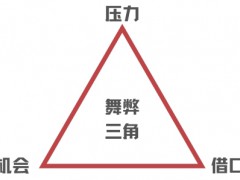歐佩克+還遠未達到其總配額
即將到來的石油供應過剩可能比預期要少得多 今年油價下行壓力可能也會小得多
需求依然強勁 布倫特原油6個月期合約價差自去年12月觸及低點以來已上漲逾一倍
2022年初 奧密克戎病例飆升和許多主要經濟體創紀錄的病例 再加上石油市場預期供應過剩 給了熊市論者一個歡呼的理由
據1月13日今日油價報道,油價在今年第一個交易周期上漲了5%,原因是分析師們關注的是,供應過剩可能不會像幾個月前預測的那么嚴重,這也是因為2021年底庫存水平非常低。此外,世界上許多地緣政治敏感地區的石油產量波動很大。
預測人士和分析師表示,疫情的發展將繼續是今年市場最大的不確定因素,不過,預計2022年全球石油平均需求將開始超過疫情爆發前的水平。
從2021年到2022年,需求將進一步增長,除非許多地方出現新的大規模封鎖。多數分析師預測,供應無疑也將增長到超過需求的程度。不僅歐佩克+將繼續削減產量,以美國為首的非歐佩克+產油國也將增加供應,特別是在每桶80美元的油價水平上,這意味著歐佩克+產油國和非歐佩克+產油國的產量都將增長。
不過,包括彭博社第一新聞石油策略師朱利安?李(Julian Lee)在內的一些分析師表示,即將到來的石油供應過剩可能比預期要小得多,今年對油價下行壓力可能也會小得多。
首先,歐佩克+還遠未達到其總配額。投資低迷和歐佩克成員國(特別是非洲成員國)缺乏閑置產能,使得歐佩克+月產量增幅遠低于40萬桶/天,其中25.3萬桶/天分配給受歐佩克協議約束的10個成員國。
根據彭博社和彭博社Lee收集的歐佩克數據,上個月是歐佩克+連續第七個月未能實現增產,也是連續第五個月產量低于目標50萬桶/天。
據彭博社估計,歐佩克+在2021年12月產量比其總體產量目標低62.5萬桶/天,略高于11月的65.5萬桶/天。
歐佩克的情況也好不到哪里去,因為非洲成員國產量正在下降。根據路透社月度調查,歐佩克12月石油日產量較11月僅增加7萬桶,因該組織未能按照歐佩克+協議將日產量提高25.3萬桶。
此外,盡管該組織預計今年市場仍會出現過剩,但與上月評估相比,可能會有所減少。正如歐佩克在12月中旬月度石油市場報告中所言,歐佩克+繼續認為,奧密克戎對需求的影響是“溫和而短暫的”。
閑置產能正在減少
然而,所有供過于求的預測都依賴于歐佩克+將實現其產量目標的假設,但它連續七個月都沒有實現這一目標。
幾個月來,歐佩克+一直未能達到其集體產量目標,并可能在未來幾個月繼續如此。非洲歐佩克成員國缺乏提高產量的能力和投資,而俄羅斯產量和出口量估計都低于配額。產量不足甚至可能在2022年成為油價一大利好因素,特別是如果奧密克戎對全球石油需求的影響仍僅限于航空燃料的話。
阿拉伯海灣最大產油國有能力提高產量,并實現歐佩克+配額,但這當然會減少他們的閑置產能,而這正是全球閑置產能的主要來源。
由于閑置產能較低,主要集中在沙特阿拉伯、阿拉伯聯合酋長國和科威特,2022年的突然供應中斷將推高油價。
荷蘭國際集團策略師沃倫·帕特森(Warren Patterson)和姚文宇(Wenyu Yao)表示,“歐佩克+閑置產能是供應方面的擔憂,短期內不會消失。只有少數幾個成員國有能力提高產量,而其他成員國由于供應中斷和缺乏投資,未能達到商定的產量水平”。
高盛(Goldman Sachs)非常看好2022年及以后的石油行業,因為該行業投資較低,而且世界上只有沙特阿拉伯和阿聯酋兩個產油國目前有能力和手段開采比2020年1月疫情爆發前更多的石油。高盛大宗商品研究全球主管杰夫·柯里(Jeff Currie)在接受采訪時表示,其他人都在苦苦掙扎。
盛寶銀行商品策略部門主管Ole Hansen表示,“總體而言,需求依然強勁,布倫特原油六個月期合約價差自去年12月以來已擴大逾一倍,市場針對奧密克戎會對需求產生影響的擔憂情緒不高”。
低于預期的供應增長可能很快就會消除石油大量過剩的確定性,因為不確定性和波動性將繼續是今年石油市場唯一確定的兩件事。
王佳晶 摘譯自 今日油價
原文如下:
The Bullish Case For Oil Prices In 2022
OPEC+ is nowhere near pumping to its overall quota
The coming oil glut could be much smaller than expected and could exert much less downward pressure on oil prices this year
Demand remains robust as signaled in the six-month futures spread in Brent which has more than doubled since hitting a low point in December
At the start of 2022, Omicron’s surge and record COVID cases in many major economies are combining with an expected oversupply on the oil market to give bears a reason to cheer.
Yet, oil prices rose by 5 percent in the first trading week of the year as analysts focused on the possibility that the oversupply may not be as high as predicted a few months ago, also because of very low levels of inventories at the end of 2021. In addition, supply disruptions in Libya and Kazakhstan reminded market players of the volatility of much of the world’s oil production in geopolitically sensitive areas.
COVID developments will continue to be the biggest wild card in the market this year, but average global oil demand in 2022 is expected to exceed the pre-pandemic level from 2019, forecasters and analysts say.
Demand is set to grow even further from 2021 into 2022, barring new mass lockdowns in many places. Supply will no doubt also grow to the point of exceeding demand, most analysts predict. Not only is OPEC+ set to continue unwinding its production cuts, but non-OPEC+ producers—led by the United States—will also raise supply, especially at $80 oil, which means that global crude oil production is set to grow from both OPEC+ producers and those outside the pact.
However, the coming oil glut could be much smaller than expected and could exert much less downward pressure on oil prices this year, some analysts, including Bloomberg First Word oil strategist Julian Lee, say.
First, OPEC+ is nowhere near pumping to its overall quota. Depressed investments and a lack of spare capacity at many producers in the pact, especially African OPEC members, have made monthly oil production increases much lower than the allowed 400,000 bpd for OPEC+, of which 253,000 bpd is allocated to the ten OPEC members bound by the pact.
Last month was the seventh consecutive month in which OPEC+ had failed to deliver on its production increase, and the fifth straight month in which it had undershot its target production by more than 500,000 bpd, according to Bloomberg and OPEC data compiled by Bloomberg’s Lee.
OPEC+ produced 625,000 bpd below its overall production target in December 2021, slightly better than the 655,000-bpd shortfall off the target in November, per Bloomberg estimates.
OPEC is not faring much better, with African members dragging output down. According to the monthly Reuters survey, OPEC’s oil production increased by just 70,000 bpd in December from November as the cartel consistently failed to raise its production by 253,000 bpd a month as per the OPEC+ deal.
Moreover, although the group still expects a surplus on the market this year, it could be a smaller one compared to last month’s assessment. OPEC+ continues to see the Omicron impact on demand as “mild and short-lived,” just as OPEC said in its Monthly Oil Market Report (MOMR) in mid-December.
Spare Capacity Is Shrinking
Yet, all oversupply models rely on the assumption that OPEC+ will actually deliver on its production target—something it has not done for seven consecutive months.
OPEC+ has been undershooting its collective production targets for months and will likely continue to do so in the months ahead. African OPEC members lack the capacity and investments to boost production, while Russia is estimated to pump and export lower volumes than its quota. The underproduction could even become a major upside for oil in 2022, especially if Omicron’s dent to global oil demand remains limited to jet fuel, as the most recent estimates and analyses have shown.
The biggest Arab Gulf producers have the means to raise output and fulfill their OPEC+ quotas, but this, of course, shrinks their spare production capacity, which accounts for the majority of the spare capacity globally.
With lower spare capacity, mostly concentrated in Saudi Arabia, the United Arab Emirates (UAE), and Kuwait, a sudden supply disruption in 2022 would push oil prices higher.
“The supply concern which is not going to disappear anytime soon is OPEC spare capacity. There are only a handful of members that have the capacity to increase output, whilst others are failing to meet their agreed production levels due to disruptions and lack of investment,” ING strategists Warren Patterson and Wenyu Yao said on Monday.
Goldman Sachs, for example, is very bullish on oil for 2022 and beyond due to low investment in the sector and the fact that only two oil producers in the world—Saudi Arabia and the UAE—currently have the capacity and the means to pump more oil than they did in January 2020, just before COVID. Everyone else is struggling, Jeff Currie, global head of commodities research at Goldman Sachs, told Bloomberg Television in an interview last week.
“Overall, demand remains robust as signaled in the six-month futures spread in Brent which has more than doubled since the December, omicron demand worry low point,” Ole Hansen, Head of Commodity Strategy at Saxo Bank, said on Monday.
Lower-than-expected supply growth could soon wipe out the certainty of a large oil glut, as uncertainty and volatility will continue to be the only two certain things in oil markets this year.
免責聲明:本網轉載自其它媒體的文章,目的在于弘揚石化精神,傳遞更多石化信息,并不代表本網贊同其觀點和對其真實性負責,在此我們謹向原作者和原媒體致以敬意。如果您認為本站文章侵犯了您的版權,請與我們聯系,我們將第一時間刪除。







